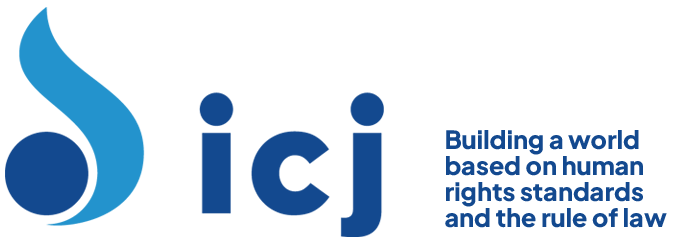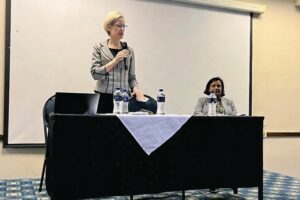Procedural Posture
The appellant, a college laboratory instructor, was dismissed because of his homosexuality. He appealed against the decision and applied for reinstatement, but was refused. He then attempted to file a complaint with the Alberta Human Rights Commission, arguing that his employer had discriminated against him on the basis of his sexual orientation. However, the Commission advised him that he could not make a complaint because the Alberta Individual Rights Protection Act (IRPA) did not include sexual orientation as a protected ground.
The appellant then challenged the constitutionality of the IRPA on the ground that it contravened Section 15 of the Canadian Charter of Rights and Freedoms because it did not include sexual orientation as a prohibited ground for discrimination. Finding that the omission of protection against discrimination on the basis of sexual orientation was an unjustified violation of Section 15 of the Charter, the judge ordered that the words “sexual orientation” be read into the IRPA as a prohibited ground of discrimination. The government of Alberta appealed to the Supreme Court.
Facts
The appellant was employed as a laboratory coordinator by a college in Edmonton, Alberta. He received positive evaluations, salary increases and promotions. However, in 1990, the appellant disclosed to his employer that he was gay. Despite the college’s request, he refused to resign. The college then dismissed him for non-compliance with its policy on homosexuality.
Issue
Whether the IRPA’s omission of sexual orientation among the prohibited grounds of discrimination infringed the appellant’s right to equality and, if so, whether the infringement was justified.
Domestic Law
Canadian Charter of Rights and Freedoms, Sections 1, 15, and 32.
Individual Rights Protection Act, Alberta, Preamble and Sections 2(1), 3, 4, 7(1), 8(1), 10, and 16(1).
Egan v. Canada, Supreme Court of Canada, 1995 (establishing that sexual orientation constituted a prohibited ground of discrimination under Section 15 of the Canadian Charter of Rights and Freedoms).
Haig v. Canada, Ontario Court of Appeal, Canada, 1992 (affirming that the omission of sexual orientation in the Canadian Human Rights Act constituted discrimination contrary to Section 15 of the Charter).
Comparative Law
Romer v. Evans, United Stated Supreme Court, 1996 (finding unconstitutional a State constitutional amendment that withdrew a specific class of people – gays and lesbians – from the protection of the law without a legitimate State purpose, in violation of the equal protection clause of the federal Constitution).
Reasoning of the Court
The Individual Rights Protection Act (IRPA) prohibited discrimination on several grounds. Over the years, IRPA had been expanded to include additional prohibited grounds, but the Alberta Government always refused to include sexual orientation. For this reason, the appellant had not been able to file a complaint for employment discrimination with the Alberta Human Rights Commission.
Issues arising from legislative omission could be considered in terms of conformity with the Charter. The Court adopted the two-step approach summarised in Egan v. Canada. First, the Court considered whether the claimant’s right to equality before the law, equality under the law, equal protection of the law, or equal benefit of the law had been denied. Since not every distinction would give rise to discrimination, the second step was to determine whether the distinction created by the law amounted to discrimination. This involved two questions. Whether the equality right had been denied on the basis of a personal characteristic that was either enumerated in the Charter or analogous to those enumerated; and second, whether that distinction had the effect of imposing a burden, obligation or disadvantage not imposed upon others, or withholding or limiting access to benefits or advantages that were available to others.
The Court rejected the respondent’s argument that the IRPA‘s “neutral silence” could not be considered to create a distinction by merely omitting to refer to sexual orientation. According to the Court, the under-inclusiveness of the IRPA did create a distinction and denied substantive equality to gay and lesbian individuals. Although neutral in appearance, the omission clearly had a differential impact on homosexuals and heterosexuals, since heterosexuals were never discriminated against on the basis of their sexual orientation.
The respondent’s contention that the distinction was not created by law, but existed in society independently of the IRPA, was also rejected. The fact that discrimination against gays and lesbians existed in society was precisely the reason why these persons needed protection.
The Court then considered the impact of the exclusion. The first and most apparent impact was to exclude lesbians and gay men from the remedial procedures established by the IRPA, a clear denial of equal protection of the law. The Court also argued that, apart from this immediate effect, it could be reasonably inferred that the exclusion of sexual orientation from the Act would contribute to, perpetuate, or even encourage discrimination on such grounds. According to the Court, the exclusion of sexual orientation from the IRPA signalled that discrimination on grounds of sexual orientation was not as serious or as deserving of condemnation as other forms of discrimination. In excluding sexual orientation from the IRPA’s protection, the Government had in effect stated that all persons were equal in dignity and rights except gay men and lesbians. Such a message, though implicit, violated Section 15 of the Charter.
Using the two-part test established in Egan v. Canada, the court then considered whether this violation of Section 15 could be justified under Section 1 of the Charter. Under Section 1, infringements or “violations” were permissible if the State of Alberta could establish that they were “reasonably justified in a free and democratic society.” This Section 1 test required that the objective of the legislation must arise from a pressing and substantial need, and the means chosen to attain this legislative end were themselves reasonable and demonstrably justifiable in a free and democratic society. To meet the second requirement, three criteria had to be satisfied: (1) the right’s violation should be rationally connected to the aim of the legislation; (2) the impugned provision should minimally impair the Charter guarantee; and (3) the effect of the measure should be in proportion to its objective, so that the abridgement of the right would not outweigh attainment of the legislative goal.
According to the Court, the omission of sexual orientation in the IRPA did not satisfy any of the aforementioned requirements. Therefore, the violation it caused could not be justified under Section 1 of the Charter.
As a remedy, the words “sexual orientation” were read into the prohibited grounds of discrimination of the IRPA.
Vriend v. Alberta, Supreme Court of Canada (full text of judgment, PDF)



